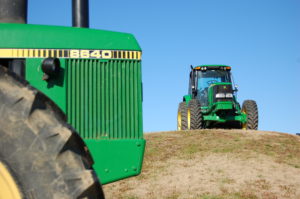
I’ve always been fascinated to learn how the leadership in a company decides to make strategic changes. As an organization gets larger, steering the direction in the same path you’ve been on is a challenge. Changing directions is a whole other matter. When the leaders identify headwinds coming that are insurmountable, creating change is inevitable, or they die.
Markets Change and Company’s Grow or Die
When a market matures consolidation is a regular occurrence. You’ve seen this in your local town I am sure. There used to be a locally owned hometown bank or the family owned grocery store on every corner. Traditional business models that were once pillars of profits morph into new entities. From a single store and single owner to a single owner and multiple locations – business models adapt to changing market conditions to survive.
Others die adapting to the realities of the day. Many times a merger isn’t the best for either party, so they both die or get sold off. Newsfeeds are littered with articles about buying and selling businesses. Some die a slow death while others plunge must faster. Sears is another example of a slow death.
There are those who thrive and find new opportunities in the changing markets. From longstanding empires, new kingdoms are created. The better get bigger, but you are never too big to fail. That’s been made clear in recent years.
Business markets that were considered normal now get disrupted. New competitors emerge that were not heard of before. Can you say Uber? Technology and the internet create new streams of potential revenue. Controlling data becomes a big deal. Look at the lawsuits between Apple and Samsung. From automotive, airlines, banking, and newspapers consolidation affects our lives in some way every day.
Ingredients That Stimulate Market Consolidation:
- In-line competition
- A desire to dominant market share
- Decreasing margins
- Declining customer base
- Infusion of technology-based products and resources
- An aging company attempting to diversify
Shark or Bait – Get Bigger, Get Better or Get Out
Every business big or small that has a defined strategic plan is ahead of the game. The key is to develop a plan, then work the plan. Yea, you’ve probably heard that a thousand times but you would be amazed to know the volume of businesses reacting to market conditions vs. executing their plan. To realize the most value of your company make a plan and understand your position. You can’t wait to make that kind of decision because the market is changing so fast.
 Do you want to become a shark or bait? Become a business that’s interested and capable of acquiring more or positioning your operation to be the best bait you can be are both opportunities. Each decision sets a chain reaction in motion that affects your future. Decide to get bigger, get better or get out.
Do you want to become a shark or bait? Become a business that’s interested and capable of acquiring more or positioning your operation to be the best bait you can be are both opportunities. Each decision sets a chain reaction in motion that affects your future. Decide to get bigger, get better or get out.
Organizational Changes Require New Thinking
In every market, there are winners, losers and wannabes. Identifying industry trends is easier today because of the volume of information at our fingertips. Now this is a whole other subject but be careful, not everything you read on the internet is true so don’t just follow the herd mentality. Learn to learn, be objective and track the source of information to see if it’s marketing or real content.
John Deere Company
 John Deere Company is one of the leading companies in the equipment industry. In 2018, it was listed as 102nd in the Fortune 500 America’s ranking and was ranked 394th in the global ranking.
John Deere Company is one of the leading companies in the equipment industry. In 2018, it was listed as 102nd in the Fortune 500 America’s ranking and was ranked 394th in the global ranking.
They have a fascinating company that “created” strategic changes. For more than a century they relied on independent dealers to sell and distribute their equipment. Many of these were family businesses for generations. In 2007, the CEO made the statement that they were not a family anymore, but a high-performance team. The business model who had loyally served the brand since 1869 was changed forever. This new message sent shockwaves through thousands of independent retail businesses.
Through strategic planning, it was identified that their core customer market was declining in numbers yet getting bigger. The distribution channel with generational family businesses was aging, and the business acumen needed to be stronger to compete on a global scale. John Deere determined they needed to work with fewer owners and with larger organizations while also expanding their footprint of products and capacity. They needed to wean itself from years of overproduction and create a dealer network that could handle “just in time” inventory.
Changing direction midstream is tough for any company — especially one that was rooted deep into the American culture. Any time you start to mess with the economic engines that have been in place for decades, resistance and challenges are normal to experience.
New Leadership New Paradigm
John Deere is a global company providing significant value to people in all walks of life. Robert (Bob) Lane served as Chief Executive Officer from 2000 to 2009 and retired as the Chairman of the Board in February 2010. He was the 8th CEO of the company since its inception and moving from a family business to a corporate entity with a global reach.
Under Mr. Lane’s leadership, John Deere pursued changes unheard of in the history of the company. Through his leadership, they shaped a paradigm about what a company could be. Key leaders developed their views of the business model and the world at large. They learned from others while staying focused on their vision. Their effort to consolidate and reshape their dealer network was unprecedented.
Interviews of Leaders With a Vision
Jak Tichnor is a friend of mine who recently “casually retired” after four decades of media experience. Since 1995 he’s been the lead producer for the Lincoln Academy of Illinois annual TV special distributed across Illinois. Since its inception in 1964, hundreds of outstanding Illinoisans have been honored from the Lincoln Academy.
Jak’s work with interviewing leaders covers a wide range. In 2013, he had the opportunity to interview Mr. Lane as an award winner. Mr. Lane talked about his early career in banking where he met others who inspired him to believe that all people could flourish. His parents and grandparents modeled a value-based life and relationships that carried over into his business philosophies.
What I also found interesting is that even before Mr. Lane was part of John Deere Company he had an interest in global views. It was not something that just came to him one day. The desire to learn caused him to seek out others who had this global vision and experience.
The new CEO created a paradigm that said they could improve the profitability of the company by delivering exceptional service to the customer. The long-term vision was that by doing the right thing in the right way you can generate the returns that they aspired to earn.
Leadership Changes Business Models
We have the luxury of looking back in time to hear what this particular leader was thinking compared to what we know today.
- Is John Deere Company better off today once the CEO passed the torch to his successor?
- Are the remaining Dealer Owner groups better off now?
It’s pretty easy to find John Deere’s history and their path to consolidating their dealer network. The company’s track record on a global scale is impressive.
While there wasn’t an easy road and the consolidation isn’t over with, my take is the owner groups who got on board are glad they did. They are achieving scale in their business models and having to chart their future in different ways.
Some owners decided not to get bigger through acquisitions or sell their operations. They’re carving out a niche and competing against large complexes despite many who said that they couldn’t survive. Inguniety, personal service, and dedication to the customer are prevailing.
There are also others who became causalities as they strived to remain relevant and lead in a rapidly changing market.
![]()
